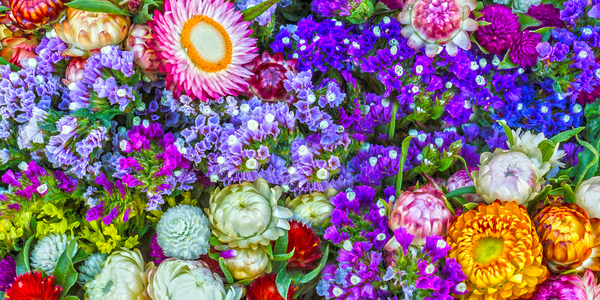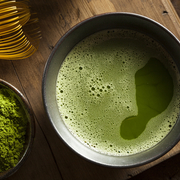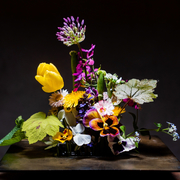The Frameworks of Ikebana Works
Ikebana works are created based on the rules of Kado (Japanese flower arrangement, literary “the way of flowers”) and the frameworks are determined depending on the types of flowers to use in the first place.
Each flower material is assigned a different role, and among all flower materials, the ones that structure a framework are called "Yakushi” (main branches).”
In Ikenobo and Sogetsu schools, the framework of each Ikebana work is structured with three Yakushi that symbolize the three basic elements of the universe in the ancient principle "Ten-chi-jin (heaven, earth and human).”
In Ikenobo school, the terms that describe the three Yakushi are called "Shin”, “Soe”, and “Tai” while Sogetsu school call them “Shin”, “Soe”, and “Hikae” respectively.
Ohara school structures the frameworks mainly with the two Yakushi called "Shushi" and "Kyakushi".
In the case of using three Yakushi, “Shin" takes the longest length and plays the main role of the work.
Flowers are placed in the order of "Shin" → "Soe" → "Tai” or “Hikae", so that a scalene triangle is formed from the overhead view, while arranging flowers in a way where “Shin" is placed in the far back from the front view.

In cases of using two Yakushi, the "Shush" is the longest one that takes the main role of a work and is placed in the far back from the front view, while "Kyakushi" is placed in the center of a work and placed at the very front.
Basically, non-Yakushi flowers are placed in the space between two Yakushi flowers.
Please keep in mind that these basic rules are respected but not necessary to follow strictly.
Usually beginners refer to the rules until they develop a good sense of Ikebana, then they arrange freely without strictly following rules once they have familiarized themselves.
As such, many Ikebana works that you often see in the exhibitions are arranged in creative manners with full of playful spirit without getting caught by the rules.
Styles of Ikebana
The frameworks of Ikebana structured by the three Yakushi are roughly classified into several patterns.
This is where distinctive characteristics come into play depending on the Kado schools.
The following shows some typical frameworks of Ikebana according to the three major schools.
I kenobo School
Similarly to the history of painting arts that the ways of expressions have changed over times, Ikenobo school has developed three styles while being influenced by the times in its long history.
The three styles are "Rikka", "Shoka" and "Jiyuka" and they have been established in this order.
“Shoka” style is the one that is arranged with 3 Yakushi, and Rikka is arranged strictly using the 7 Yakushi, while "Jiyuka" is a free and innovative style without following rules such as using Yakushi.
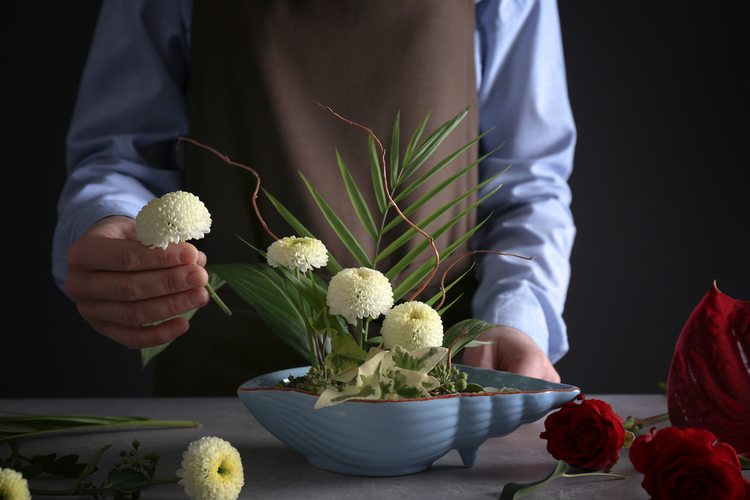
O hara School
Ohara School has established roughly 4 styles: “Hana Isho,” “Heika,” “Moribana,” and “Hanamai.” In case you enroll in Obara school, you will start with “Hana Isho” style.
The basis of "Hana Isho" is divided into 2 forms "upright" which arranges Shushi upright and tilts Kyakushi forwardly, while the other form "tilt" which extends Yakushi flowers horizontally.
S ogetsu School
Basically, Sogetsu School arranges in the 2 major styles: "Kihon Risshin (upright)" and "Kihon Keishin (tilt)" that structure the framework with three Yakueda, and “Ouyo-gata” is an application style based on the Kihon Risshin and Kihon Keishin.
In “Kihon Risshin", Shin is placed a bit upright (tilting approx. 15°) and in “Kihon Keishin", Shin is tilted 45°.
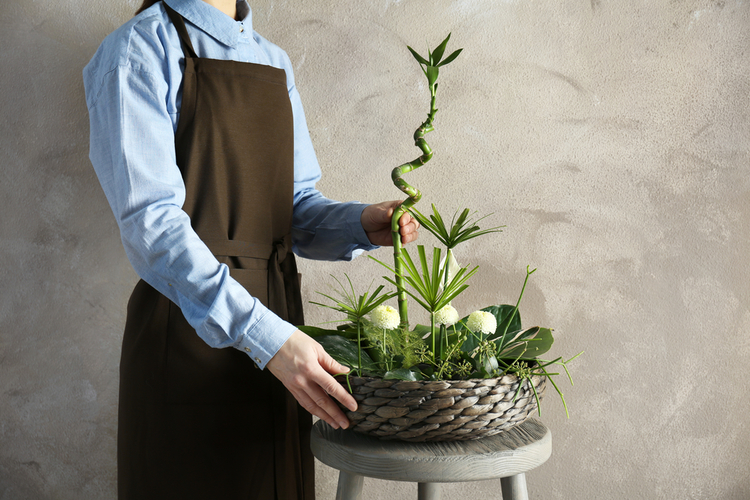
Kihon Keishin (Tilt form)
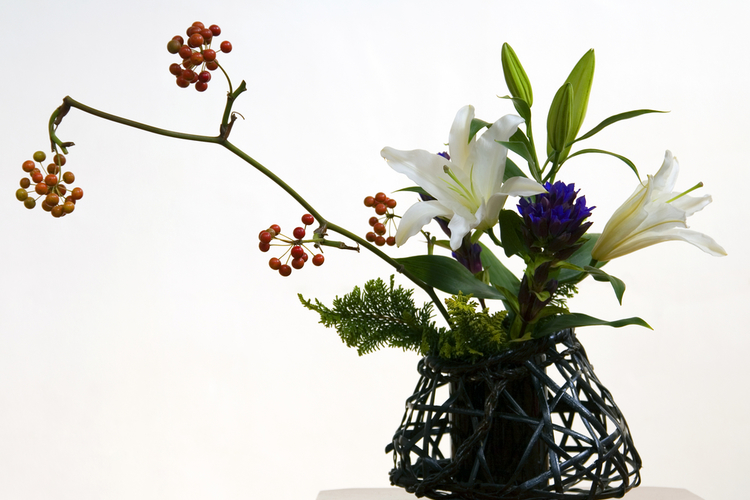
Arrangement with Seasonality
Arranging flowers with seasonality plays a very important role in Kado across all schools.
Lack of seasonality in choosing flowers may result in looking unnatural.
First of all, plants and flowers originally are seasonal.
Kado is an art that cherishes the four seasons of Japan; thus, basically seasonal flowers are selected to arrange Ikebana works.
Of course it is okay to use non-seasonal flowers for practicing, but using seasonal flowers works better in presenting to other people as part of hospitality.
There are some flowers and plants used throughout the year such as Dracaena leaves and roses.

The term “Toriawase” refers to a combination of flower materials in an Ikabana work.
The principle of Toriawase stresses on the importance of harmony and color balance of each Ikebana work as a whole, rather than just allowing to use whatever you like.
However, there is no clear rule that forbid specific flowers to combine in a work.
You are allowed to develop a sense of Ikebana by yourself and follow your inspiration for which flowers to combine, but many people learn by referring to the guidance of their teachers and textbooks at the beginning.
Artificial Materials/Tools Arranged Invisible
Kado is an art by expressing with living flower materials.
Thus, basically no artificial flowers are used in any Ikebana work.
There are some Ikabana works arranged for casual interior decoration, but artificial materials are not exposed to people’s sight as part of Ikebana expression.
Also, except for vases to hold Ikebana works, all other artificial equipment used in any Ikebana works are made invisible to people.
A typical example is a Kenzan (called spiky frog, a flower holder with spikes) used mainly in a style using a shallow basin, around which large leaves or short plants are placed at lower positions to make it not to been seen.
In some cases, wires or bamboo skewers are used to fix flowers but never exposed to the people’s sight.
Although you may get an impression that Kado is practiced in strict and uptight manners, the essence is to allow practitioners to express their artistic senses freely on a framework just like paintings and sculptures.
Please keep in mind that despite some detailed rules mentioned earlier, arranging flowers out of basic rules are not considered mistakes.
Kado is an art you can always pursue new forms of flower arrangement to help it evolve.

